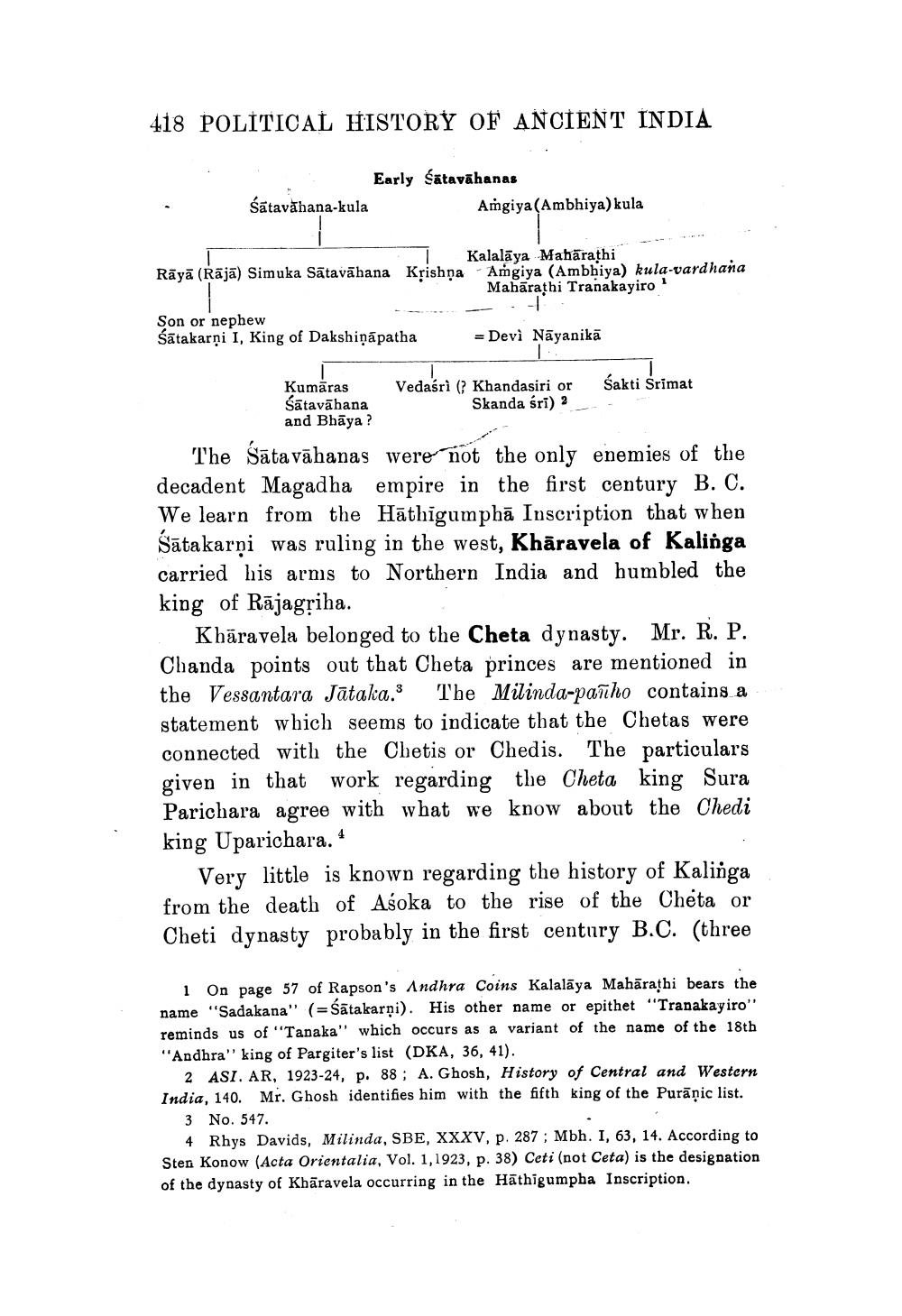________________
418 POLITICAL HISTORY OF ANCIENT INDIA
Early Satavahanas Śātavāhana-kula
Amgiya(Ambhiya) kula
Kalalāya Mahārathi Rāyā (Rājā) Simuka Sātavāhana Krishna - Amgiya (Ambhiya) kula-vardhana
Mahārathi Tranakayiro
Son or nephew Satakarņi I, King of Dakshiņāpatha
= Devì Nāyanikā
Kumāras Vedaśrì (? Khandasiri or Śakti Srimat Sātavāhana
Skanda sri) 2 - and Bhāya? The śāta vāhanas were not the only enemies of the decadent Magadha empire in the first century B. C. We learn from the Hāthigumphā Inscription that when Sātakarņi was ruling in the west, Khāravela of Kalinga carried his arms to Northern India and humbled the king of Rājagļiha.
Khāravela belonged to the Cheta dynasty. Mr. R. P. Chanda points out that Cheta princes are mentioned in the Vessantana Jatal:a. The Milimda-paibo contains a statement which seems to indicate that the Chetas were connected with the Chetis or Chedis. The particulars given in that work regarding the Cheta king Sura Parichara agree with what we know about the Chedi king Uparichara.
Very little is known regarding the history of Kalinga from the death of Asoka to the rise of the Cheta or Cheti dynasty probably in the first century B.C. (three
1 On page 57 of Rapson's Andhra Coins Kalalāya Mahārathi bears the name "Sadakana" (= Śātakarņi). His other name or epithet "Trapakayiro" reminds us of "Tanaka" which occurs as a variant of the name of the 18th "Andhra" king of Pargiter's list (DKA, 36, 41).
2 ASI. AR, 1923-24, p. 88; A. Ghosh, History of Central and Western India, 140. Mr. Ghosh identifies him with the fifth king of the Purāņic list.
3 No. 547.
4 Rhys Davids, Milinda, SBE, XXXV, p. 287 ; Mbh. I, 63, 14. According to Sten Konow (Acta Orientalia, Vol. 1, 1923, p. 38) Ceti (not Ceta) is the designation of the dynasty of Khāravela occurring in the Häthigumpha Inscription.




